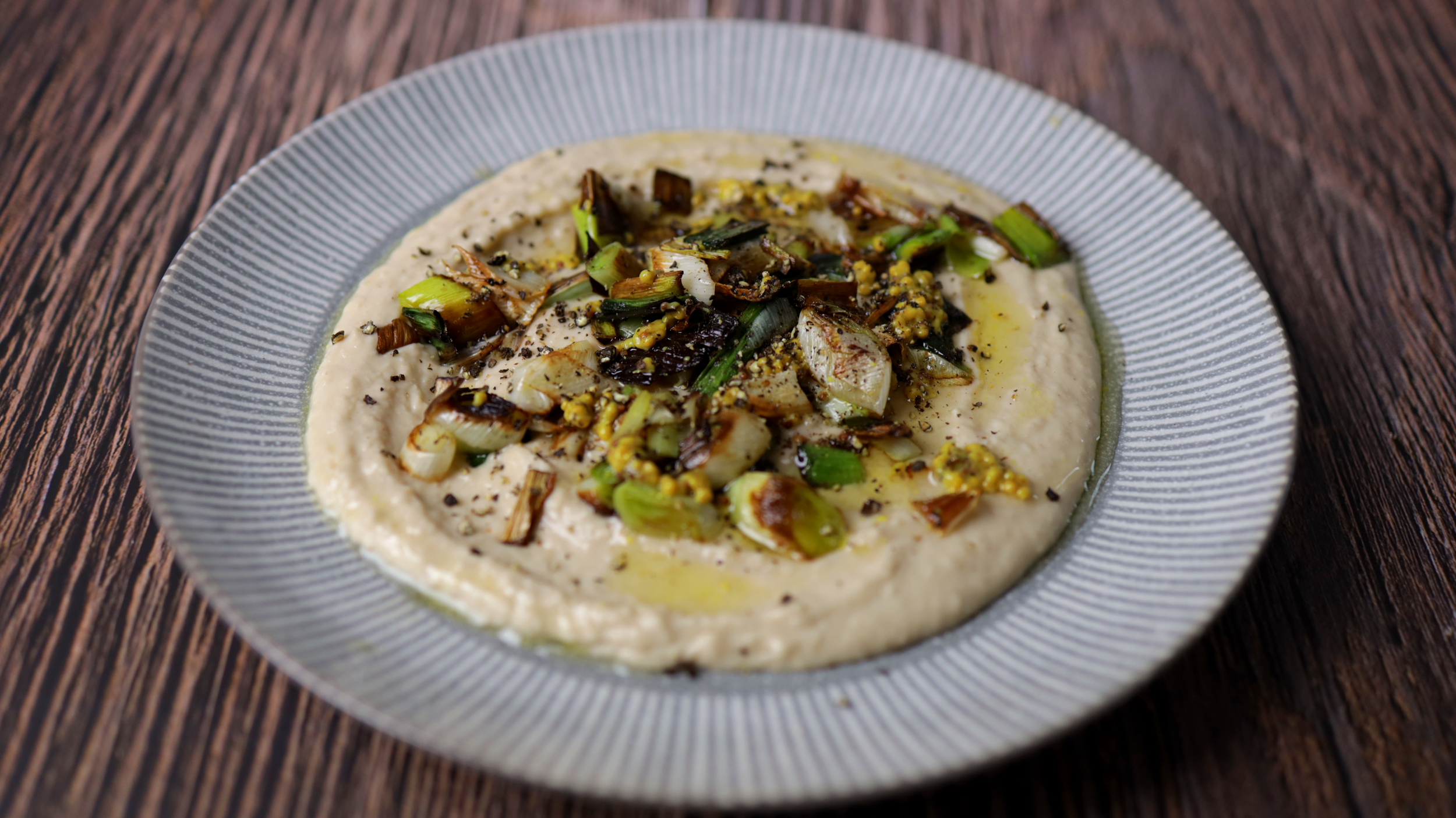Leek and Borlotti Bean
This side dish wouldn’t look too out of place on a meze platter, and manages to bridge the gap between a hummus and whipped feta. I originally made it using butter beans, but decided to adjust it for a crop that grows well in Britain. Super quick, balanced, and so damn tasty, this dish goes beautifully with a good drizzle of your finest olive oil (or wild garlic oil, if you’ve been following our recipes), and a nice chunk of sourdough.
Once you’ve made this bean paste you might want to start experimenting with it. Try toasting some cumin, coriander or fennel seeds and mixing them in. The whole seeds release wonderful aromatics each time you bite into one. You can also blend in fresh ginger root or sun dried tomatoes for alternative ideas. They’re all great.
At the time I’m publishing this (in Britain) we’re all pulling up the last of the leeks to free up space in our veg beds. And, if you’re anything like us, then the leeks your left with are likely to be the little runty ones you’ve been avoiding whilst you had better to pick from. So this recipe is designed to work with your smallest, oldest little leeks and make them shine. From the acidity of the borlotti paste and mustard, to the salt, sesame, and olive oil, everything is designed to really bring out the sweetness of the leeks. Even the way they’re cooked (charred up a little in a hot pan) is my way of extending the flavour profile of the leeks, giving them a charred bitter undertone that contrasts the sweet, steamed freshness.
So let’s crack on with the recipe!
Leek and Borlotti Bean
Serves 3-4 Sides
240g of cooked borlotti beans
1 lemon, juice
1tbs whole sesame tahini
60ml extra virgin olive oil
1tsp salt
3 runty leeks (or 1 full sized)
1tsp wholegrain mustard
1tsp cracked black pepper
Step 1.
For the best results, I use dried borlotti beans. Soak them overnight and cook them in fresh water the following day. If you happen to have a pressure cooker, pop them in that to cook as the texture of the beans really come through after blending. In pressure cooking, half your cooking time for every 5C/40F over boiling point. But let’s not be snooty about this, if you want to use tinned borlotti beans then you go for it, I adapted the recipe measurements to suit 1 tin of 400g.
Add the cooked beans, lemon juice, salt, and 40ml of the extra virgin olive oil to the blender and give it a blast. Once the beans are suitably smooth, add your tahini and continue to blend. Tahini has a great thickening ability so you may want to add more oil to loosen up the paste. If so, keep the blender running and drizzle in through the cap. Taste whilst it’s still in the blender and adjust the seasoning. It may seem like a lot of salt, but this is a treat that really brings out the creaminess of the beans and balances the bitterness of the tahini. If you’d prefer to add less then be my guest.
Step 2.
Next, roughly chop up your runts (leeks) and chuck them into a hot frying pan with a drizzle of oil. As beautiful as leeks are when cooked in butter, don’t be tempted to use it for this as butter will burn at the temperature we want these leeks.
Season as you cook and toss them around from time to time. Try not to disturb them too much as you want the leeks to brown up and stay together (and too much stirring will break them up). This should take no longer than 5 minutes, keeping the greens of the leek fresh, vivid and sweet.
Step 3.
Put 1tsp of wholegrain mustard in your remaining 20ml of extra virgin olive oil and loosely mix. Spoon your bean paste onto your plates, then top with the leeks, mustard oil and freshly cracked black pepper.
If you enjoy this recipe, remember to try out the variations and mix it up. Try different beans, toasted spices, sun dried tomatoes and all sorts. You could try it in combination with different fried vegetables too, or even pickled vegetables. It’s a seriously diverse dish.



